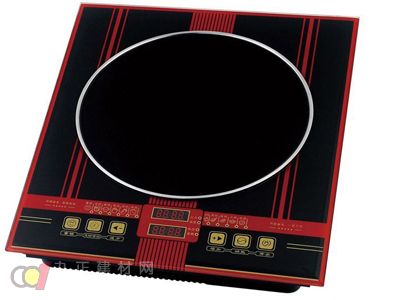Induction cookers have revolutionized the way we cook by eliminating the need for open flames or traditional conductive heating methods. Instead, they generate heat directly at the bottom of the pot using electromagnetic induction, significantly improving thermal efficiency. But with this advancement comes a common question: do induction cookers emit radiation? How much is it, and how can we minimize exposure? Let's explore these concerns in detail.
As one of the most popular kitchen appliances today, induction cookers are known for their convenience, safety, and energy efficiency. However, like many electronic devices, they may produce some level of electromagnetic radiation. This raises important questions about their safety and how to use them responsibly. In this article, we'll take a closer look at the radiation from induction cookers and provide practical tips to reduce exposure.

Induction cookers work based on the principle of electromagnetic induction. They consist of a high-frequency coil, a power conversion unit, a control system, and a cooking vessel made of ferromagnetic material. When electricity flows through the coil, it creates an alternating magnetic field. This field induces eddy currents in the metal base of the pot, which then generate heat. Since there’s no open flame involved, induction cooking is not only safer but also more hygienic and efficient.
Now, the big question: do induction cookers emit radiation? The short answer is yes—but the level is generally considered safe. The electromagnetic field produced by the cooker can leak slightly, especially if the cookware doesn’t fully absorb the magnetic energy. This leakage is what leads to minor radiation. However, modern induction cookers are designed with shielding and safety mechanisms to keep this radiation well within acceptable limits.
How much radiation do induction cookers actually emit? According to studies, the radiation levels are typically much lower than those from other household devices like cell phones. While the frequency is similar, the power output of an induction cooker is significantly higher. That said, the radiation is still far below harmful thresholds when used properly.
The amount of radiation depends on several factors, including the quality of the cookware, the power of the cooker, and the distance from the unit. It’s also influenced by the design of the appliance itself. For example, better-quality models tend to have less leakage and improved shielding.
Regarding the radiation range, it's generally considered safe to be at least 50 cm away from the cooker. At distances beyond 1 meter, the radiation becomes negligible and poses no health risk. So, while the radiation is present, it’s not something you should worry about unless you’re in very close proximity for extended periods.
To reduce exposure, here are a few practical tips:
- Choose the right cookware: Use pots and pans made of materials that efficiently absorb the magnetic field, such as stainless steel. Poorly designed cookware can increase radiation leakage.
- Avoid placing metal objects nearby: Items like spoons or utensils near the induction surface can reflect or amplify the electromagnetic field, increasing exposure.
- Limit prolonged exposure: Especially for pregnant women or individuals sensitive to electromagnetic fields, it’s wise to avoid standing too close to the cooker for long periods.
In summary, while induction cookers do emit a small amount of electromagnetic radiation, it’s generally considered safe under normal usage conditions. With proper precautions, you can enjoy the benefits of this modern cooking technology without unnecessary concern.
Induction Cooker vs. Electric Ceramic Cooker
While many people are familiar with induction cookers, electric ceramic stoves are another popular option, especially in newer kitchens. Here’s a quick comparison to help you understand the differences:
- Heating Technology: Induction cookers use electromagnetic fields to generate heat directly in the cookware, while electric ceramic stoves rely on infrared heating elements beneath a glass-ceramic surface.
- Heat Control: Induction cookers offer precise temperature control and faster heating, whereas ceramic stoves may take longer to reach desired temperatures and are less responsive to adjustments.
- Cooking Performance: Induction cookers are ideal for tasks that require rapid heating, such as stir-frying. Ceramic stoves, on the other hand, are better suited for even, slow cooking and have a wider range of functions.
- Safety: Both are relatively safe, but induction cookers are more energy-efficient and cooler to the touch, reducing the risk of burns.
Whether you choose an induction cooker or an electric ceramic stove, both have their own advantages. Your choice will depend on your cooking habits, preferences, and the type of dishes you frequently prepare.
A Robe hook is a great way to hang bath towels and clothing to dry, and they aren't just for the bathroom. They are also great storage solutions for entryways, laundry rooms, kitchens, and bedrooms.
Robe Hook,Robe Hook Design Ideas,Wall Mounted Robe Hook,Double Robe Hooks
Kaiping Jenor Sanitary Ware Co., Ltd , https://www.jenorsanitary.com